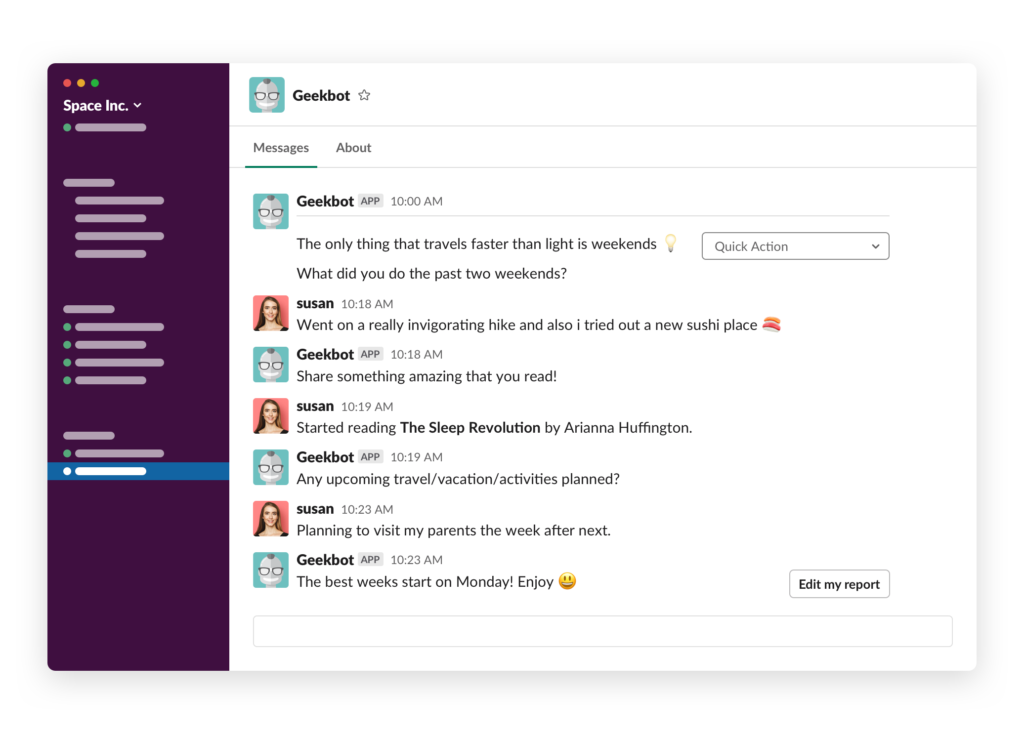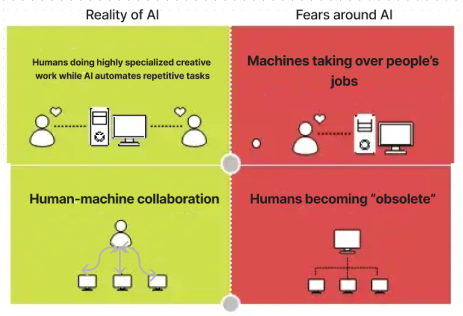Modern workplaces are evolving at an unprecedented pace. In the post-pandemic world, employers are having to make decisions in regards to the future of their workspaces. One of the most important choices they face is whether to have synchronous or asynchronous communication methods.
With more people than ever working from home, either fully or part time, this decision has far-reaching implications for work culture. Both styles of communication come with their distinct advantages and drawbacks.
It is crucial for employers to develop a nuanced understanding of sync and async communication so they can empower their teams to make informed choices. While both of these styles can be advantageous, they may also be detrimental to some workplaces. Ultimately, it is about finding the right tools that align with your unique operational needs and objectives.
Table of Contents
Synchronous Communication
In synchronous communication, information is exchanged in real-time. It creates immediate and interactive dialogue that everyone feels a part of. If you are using this method, you will probably use a channel that allows for instantaneous responses. This may include video conferences, phone calls, or instant messaging platforms.
Sync communication can allow for quick decision-making and a better flow of conversation. This leads to a better exchange of ideas with a sense of immediacy.
Whether through face-to-face interactions or virtual meetings, synchronous communication creates a responsive and collaborative environment.
The Pros of Working Synchronously
Immediate Collaboration
Synchronous work accommodates immediate collaboration. This allows employees to respond to problems in real-time and have quick decision-making. Conversations can be more dynamic. If a task requires instant feedback, innovation, or creativity, sync communication can be a better option.
Higher Clarity
Verbal and visual cues in real-time interactions garner a more nuanced communication. Tone and body language create richness in communication. This will reduce misunderstandings or misinterpretations. All team members are on the same page with sync communication.

Teambuilding
Teams are able to come up with ideas together during sync communication. Not only that, but they feel more humanized to each other when they are able to see and interact in a more relaxed, synchronous environment. This builds stronger teamwork bonds between colleagues.
The Cons of Working Synchronously
Disruptions
Synchronous work can be disruptive. While it can foster teamwork, individual focus can actually be hindered. The constant need for immediate responses can interrupt workflow on an individual level.
Time Zone Challenges
Navigating different time zones can be a big challenge in synchronous work settings. Some coworkers may end up being excluded from certain discussions. Since written records are often lacking in sync communication, catching up will be difficult. Having a diverse and globally dispersed team may not be possible with sync communication.
Inflexible
Synchronous methods are usually not flexible. Team members may struggle to manage their own schedules effectively. This can impact work-life balance and prevent individuals from optimizing their productivity on their own terms.
The Best Tools for Synchronous Communication
Here are some of the best tools for synchronous communication:
Slack
Slack is a popular instant messaging platform that can facilitate quick and direct communication. It allows users to create organized channels and send messages in real-time. You can even integrate various apps to streamline synchronous exchanges. This software creates a dynamic space for spontaneous discussions, creating a more connected and responsive team.

Microsoft Teams
Microsoft Teams is one of the best applications for video conferencing. You can share and collaborate on files and co-author with your colleagues in real-time. Integrate the software with Microsoft 365 to further enhance synchronous communication. This will give your team a comprehensive solution for collaborative work.
Asynchronous Communication
Asynchronous communication does not require immediate responses. This method allows participants to interact at their own pace. It utilizes written communication channels like email, project management tools, or shared documents. Unlike synchronous communication, asynchronous conversations do not require all parties to be present simultaneously.
The Pros of Working Asynchronously
Flexible
Asynchronous work empowers team members to operate on their own schedules. It can accommodate diverse working styles and even cater to varying time zones. This flexibility lets employees have better work-life balance and manage their workload better.
Documented
Written communication is a key element in asynchronous methods. Emails or project management tools are the main communication tools. They create a thorough and accessible record of discussions that can be accessed later. Documentation enhances transparency and creates a more accountable system. It can help track project progress and decisions over time.

Uninterrupted
Asynchronous communication gives employees uninterrupted blocks of time to focus deeply on other tasks. Without the constant interruptions common in synchronous communication, they can work distraction-free. Concentration and productivity both improve in async communication.
The Cons of Working Asynchronously
Delayed Responses
The absence of immediate responses can cause delays in decision-making and problem-solving. This is particularly the case when swift collaboration is required.
Miscommunication and Misunderstanding
Written communication may lack the nuance and clarity of face-to-face interactions. This may cause misunderstandings or miscommunications. Projects may be delayed, tasks may not be assigned properly, and conflicts may even arise. Careful consideration of language and context needs to be enforced in async communication channels.
Communication Overload
Async communication often consists of multiple communication channels. You may have emails, cloud networks, and instant messaging platforms where you are communicating. This can pose a challenge for your team. There may even be an overload of messages when someone logs on after a period of time. Managing and prioritizing tasks in a way that avoids overwhelming team members is crucial to preventing burnout.
The Best Tools for Asynchronous Communication
Here are some of the best tools for asynchronous communication:
Trello
Trello is a collaborative project management tool that allows you to create task boards. Team members can contribute to projects, leave comments, and update tasks asynchronously. It promotes flexibility. Trello is a very visually organized platform with a user-friendly interface. This enhances clarity and makes it an effective tool for managing tasks in a structured manner.

Asana
Asana is a robust project management tool. It is a particularly good pick for collaborating asynchronously. It has features like task assignment, due dates, and project timelines. This allows Asana users to have more organized and efficient communication. Team members are able to contribute at their convenience while maintaining a structured workflow.
Both synchronous and asynchronous communication are necessary in the modern workplace. Each method brings its own set of strengths and weaknesses to the collaborative environments. This underscores the importance of a nuanced approach that is tailored to your specific organizational needs.
The key to successful workplace communication lies in striking a balance. Blend synchronous and asynchronous elements to create the perfect communication strategy. Embrace the strengths and mitigate the weaknesses of both approaches.
When your team is working on a larger project, synchronous communication will create a more collaborative environment. Outside of such projects, async communication can be ideal.
A dynamic strategy that changes with your team is what will ultimately cultivate an environment that fosters collaboration, efficiency, and adaptability at the same time.
Have a vision for your business? Let us help you get started! At EvolveDash, we’re passionate about helping businesses grow and evolve in the digital world. Our team is here to help every step of the way, from developing custom mobile apps to creating personalized websites.
With a proven track record of helping over 100 satisfied customers and 450 completed projects, we’re confident we can help you achieve your goals too. Let’s turn your business vision into success!
FAQs
- How can a company transition from synchronous to asynchronous communication?
Companies can gradually introduce async methods by encouraging written updates, using project management tools, and setting clear expectations for response times.
- What industries benefit the most from synchronous communication?
Industries that require real-time problem-solving, such as healthcare, customer service, and emergency response, benefit the most from synchronous communication.
- Can hybrid teams effectively use both synchronous and asynchronous communication?
Yes, hybrid teams can use sync communication for brainstorming and decision-making while relying on async methods for documentation and flexible collaboration.
- How can businesses avoid miscommunication in asynchronous communication?
Businesses should provide clear guidelines, use structured templates for messages, and encourage employees to ask clarifying questions when needed.
- Are there any security concerns with asynchronous communication tools?
Yes, businesses should ensure that async tools have strong encryption, access controls, and data backup systems to protect sensitive information.



















